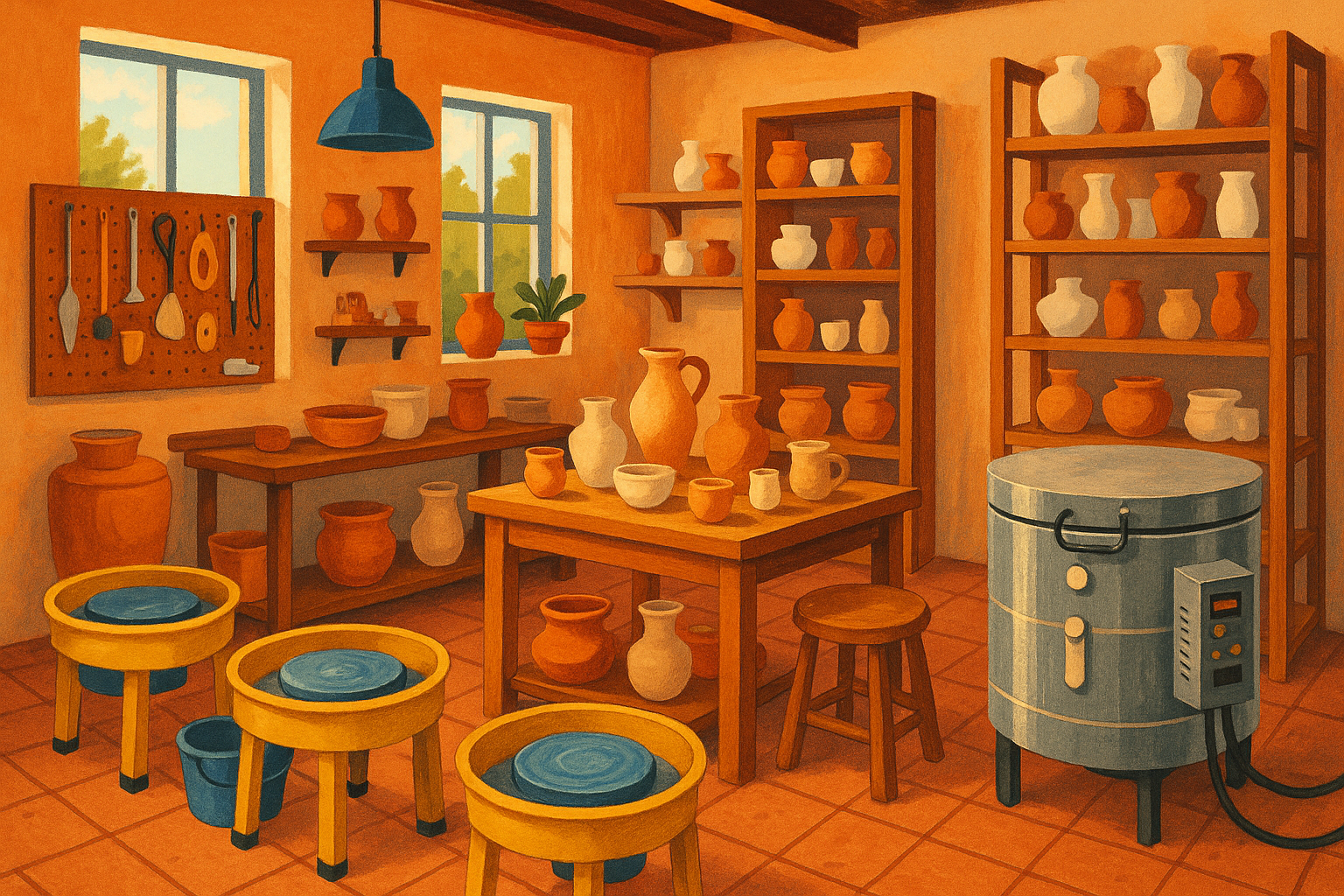Funding Ceramics Studios: Kilns, Wheels, and Vents
Ceramics is both an art and a business. Whether you’re starting a small pottery studio, expanding a community art space, or modernizing a school ceramics lab, the right equipment is crucial. But kilns, pottery wheels, and ventilation systems come with significant costs—often ranging from $25,000 to $100,000+ for a fully equipped studio.
For many artists and educators, funding options like loans, leasing, and grants are the key to making a ceramics studio dream a reality.
Why Funding Is Essential for Ceramics Studios
-
High Equipment Costs – Commercial kilns and venting systems are major investments.
-
Safety Compliance – Studios need professional ventilation for health and legal standards.
-
Growth Potential – Adding more wheels or larger kilns allows you to serve more students or clients.
-
Cash Flow Protection – Financing helps spread costs over time.
-
Competitive Edge – Updated equipment attracts more artists and students.
Equipment Commonly Funded
✔ Kilns – Electric, gas, or wood-fired models for firing ceramics.
✔ Pottery Wheels – Essential for individual students and production potters.
✔ Ventilation Systems – To manage kiln fumes and maintain air quality.
✔ Clay Mixers & Extruders – Increase efficiency for larger studios.
✔ Work Tables & Furniture – Sturdy, heat-resistant workstations.
✔ Glaze & Material Storage – Cabinets and shelving for safety and organization.
Funding Options
1. Equipment Loans
-
Borrow to purchase kilns, wheels, or vents outright.
-
Fixed monthly payments with ownership from day one.
-
Best for long-term studio investments.
2. Lease-to-Own Programs
-
Lower upfront costs.
-
Ownership transfers at lease-end.
-
Perfect for studios gradually scaling operations.
3. Operating Leases
-
Equipment returned or upgraded at lease-end.
-
Best for temporary or pilot community programs.
4. SBA Loans & Microloans
-
SBA 7(a) loans can finance large-scale studios.
-
SBA Microloans (up to $50,000) are ideal for small studios and teaching spaces.
5. Arts & Education Grants
-
National Endowment for the Arts (NEA) supports creative space development.
-
Local arts councils often fund community ceramics programs.
-
Private foundations may fund equipment for schools and nonprofits.
Example Funding Scenario
A ceramics studio wants to expand with:
-
2 Electric Kilns = $25,000
-
12 Pottery Wheels = $18,000
-
Ventilation System = $15,000
Total Investment: $58,000
With a 6-year equipment loan at 7%, monthly payments would be about $950. If the studio adds 10 new students per session at $150/month, that’s $1,500/month in new revenue—more than enough to cover the loan.
Tips for Securing Studio Funding
✔ Bundle kilns, wheels, and vents into one financing package.
✔ Compare lenders familiar with arts and education projects.
✔ Pair loans with arts grants or crowdfunding campaigns.
✔ Plan for insurance, installation, and safety upgrades in your budget.
✔ Track ROI by measuring increased class capacity and revenue growth.
Final Thoughts
Launching or upgrading a ceramics studio requires significant investment, but funding options make it possible to build a safe, professional, and inspiring space. With loans, leasing, and grants, you can finance kilns, wheels, and vents while keeping cash flow stable—ensuring your studio supports creativity and community for years to come.











